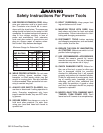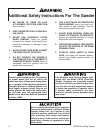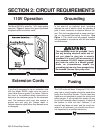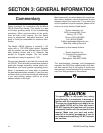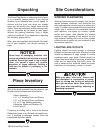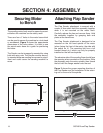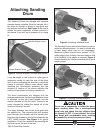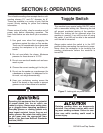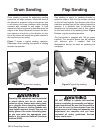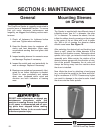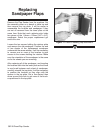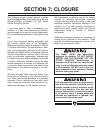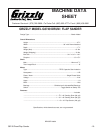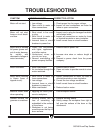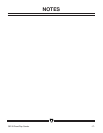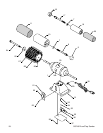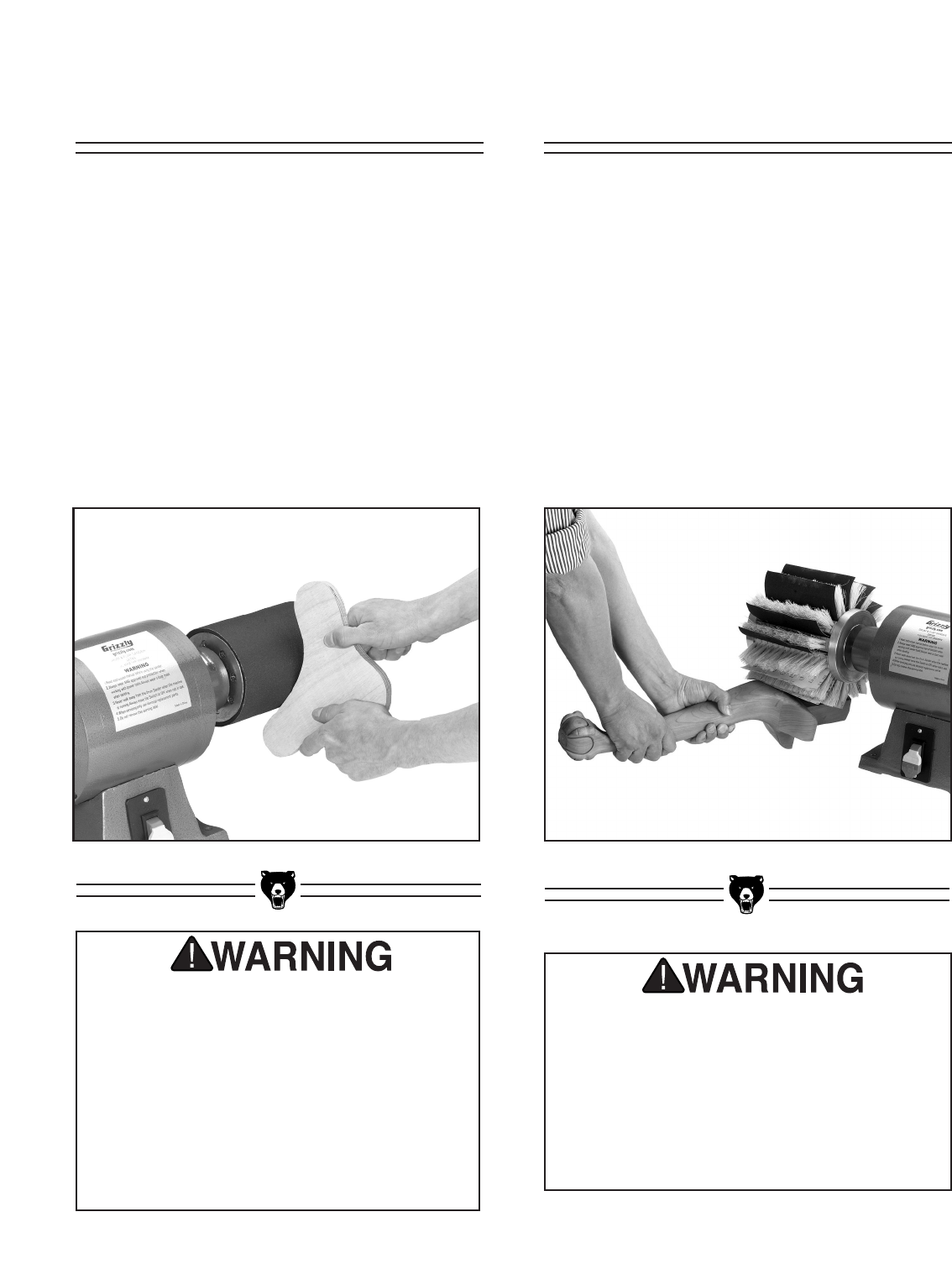
G8749 Drum/Flap Sander -11-
Operating this equipment has the potential
to propel debris into the air which can
cause eye injury. Always wear safety glass-
es or goggles when operating equipment.
Everyday glasses or reading glasses only
have impact resistant lenses, they are not
safety glasses. Be certain the safety glass-
es you wear meet the appropriate stan-
dards of the American National Standards
Institute (ANSI).
Drum Sanding
Drum sanding is perfect for performing sanding
operations on edge contours. Inflate the drum to
the desired air pressure using a hand pump. Use
a soft sleeve and lower pressure when sanding
contours with rounded or soft edges. A hard
sleeve and higher pressure is desirable when the
edge is to be sharp. Be certain to mount the abra-
sive sleeve on the drum so the direction of rota-
tion of the sleeve will match the spindle rotation of
the machine you are using.
Figure 7 shows a typical sanding operation.
Remember when sanding, the spindle is rotating
towards the operator.
Figure 8. Typical drum sanding.
Flap Sanding
Flap sanding is useful for sanding rounded or
spherical shapes. With the flap sander mounted
on the left hand spindle, the abrasive side of the
individual sanding flaps will be rotating toward the
operator. It is generally best to introduce the
workpiece to the downward side of that rotation
for the best control of the sanding forces.
Figure
9
shows a typical sanding operation.
The flap sander is supplied with 120 grit paper
installed. The abrasive sheets can be replaced
with different grits if needed. See the
Maintenance section for detail on replacing the
sandpaper.
Figure 9.Typical flap sanding.
DO NOT attempt to operate this machine
before completing the assembly and adjust-
ment instructions. Be sure that the switch is
off and the cord is disconnected from the
power source at all times until assembly and
adjustment are complete and you have
reviewed all safety guidelines. Serious
injury could occur.



